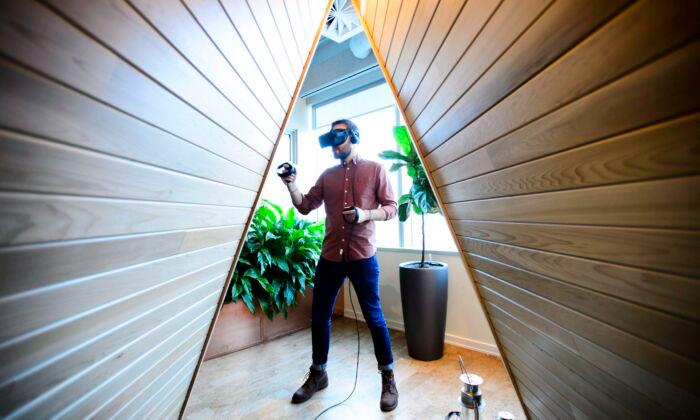The debate over potential health consequences from wireless device radiation has officially crossed the virtual threshold.
The established FCC-safe absorption rate for radiation from wireless devices is 1.6 watts per kilogram (W/kg).

Apple is about to join the virtual world and is set to release its first “mixed reality” headset later this year.
But industry fanfare hasn’t stopped researchers and consumer concerns over the possible health consequences of prolonged usage of VR headsets.
Troubling Results
Many scientists say it’s very possible. Especially with a dearth of long-term data on the effects of radiation exposure on device users. However, the results from several studies suggest lengthy exposure to non-ionizing EMF radiation causes trouble regulating body temperature and cellular damage.The authors noted that spikes in oxidative stress are also associated with an increased presence of cancerous tumors.
At that point, cellular tissue will begin to overheat. “It is particularly important to avoid electromagnetic exposure of the head,” the study authors said in the report.
Keeping A Distance
Major organizations tiptoe around the topic of wireless radiation’s potential to affect human health.However, most hold tight to what’s known as the “electron argument.”
It’s the theory that low-frequency, non-ionizing radiation can’t dislodge electrons from an atom or molecule. Lacking that function, adherents suggest there won’t be any direct DNA damage, making cancer an unlikely exposure outcome.

Though other scientists disagree, saying the “electron argument” is based on a flawed assumption and a model that’s used for a different type of radiation.
Government and civilian agencies are vague when questioned about the effects on wireless device users. They add qualifiers like “not known to cause cancer” or “has not been found to cause cancer.”
When contacted by The Epoch Times regarding changes in safety guidelines for radiation exposure in wireless device users, the FCC declined to comment.
Though industry developers say, beyond the amount of radiation emitted, it’s the distance from the user that makes all the difference.
“How far away is the device? Even a few centimeters can exponentially reduce the specific absorption rate,” Winston Nguyen told The Epoch Times.
Nguyen is a developer at VR Heaven. He says the radiation-emitting portion of VR headsets is far enough away from a user’s body that the amount absorbed should be minimal. He also noted the same rule applies to mobile phones.
“I know that if mobile phones were tested up to our skin, it would exceed the 1.6 safety standards, but they are tested one to 1.5 centimeters away from our skin.”
Though Nguyen admits that too much of anything can be bad. He says since VR headsets emit non-ionizing EMF radiation, it only has the potential to be dangerous at “very high intensities.”
User Perspective
Some VR users are taking precautions when using their headsets due to the lack of sufficient data on possible health consequences.“I’m usually cautious when using any type of VR headset. I tend to not put it on for more than an hour at a time,” Muneeb Fazal told The Epoch Times.
Fazal is the general manager of Leap Digital, a marketing agency that provides VR solutions to clients.
He admits to having discussed the potential dangers of using VR headsets with his peers and hasn’t found a straight answer.
Fazal also said he’s “low-key afraid” of using his VR headset for longer than an hour at a time.
“I’ve noticed that in the case of the Quest 2, if the vents are blocked, the headset can get warm. At times, uncomfortably warm. Sure, I may use wireless earbuds for eight or more hours a day, but then those types of small devices don’t put out as much wattage compared to VR headsets.”
Some gaming experts say there needs to be more research to clear the mist surrounding VR headset radiation safety.
“There’s a lot of concern surrounding the potential health effects of prolonged exposure to high levels of radiation emitted from VR headsets. However, it is difficult to determine what level of radiation is safe,” CEO and owner of Game Taco, Ivan Lovre Marusic, told The Epoch Times.
Marusic says some industry manufacturers are addressing the problem up front by incorporating features that reduce radiation exposure, like time limits or automatically shutting off when not in use. Certain materials are also better at reducing radiation exposure.
“The current consensus is that short-term exposure to VR radiation levels above the ’safe limit' should not be a cause for concern, but more research is needed,” he said.





